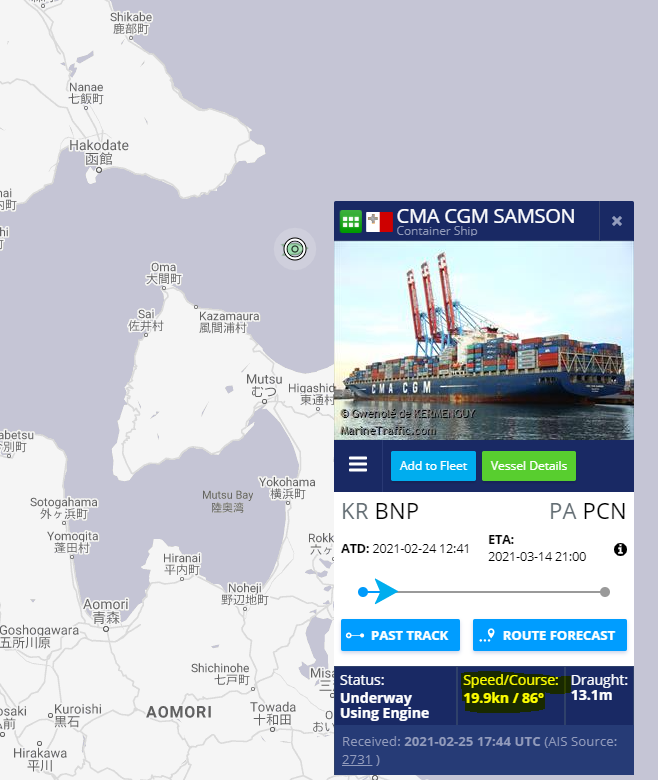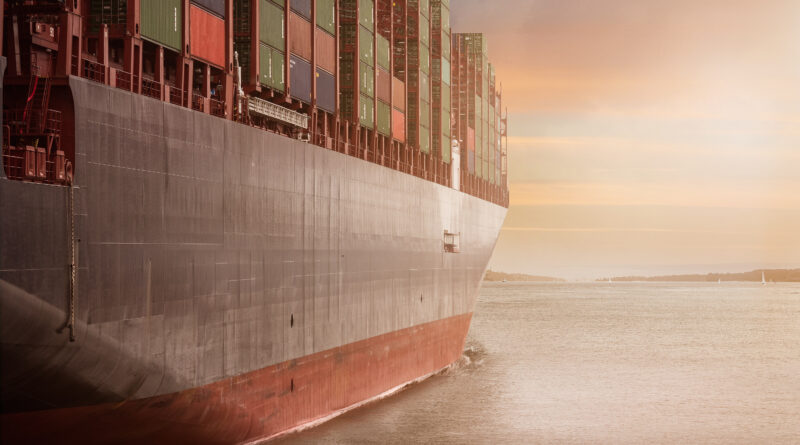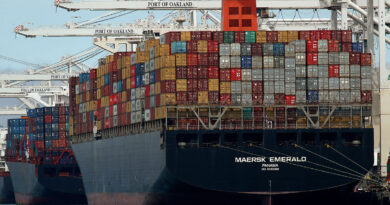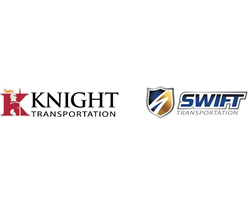“Fast Vessels”
"Fast Vessels" in ocean cargo context
The misunderstood use of logistics terms. I frequently get calls for clients asking if they can book on a “fast” vessel. In most cases, this is not really a thing.
Most ocean vessels move at an average of 20 knots which is technically 20 Nautical miles per hour. To get the conversion multiply by 1.151 as a nautical mile is a little more than the traditional 5280 ft , AKA land mile. A nautical mile is approx 6076 ft.
Back to the speeds; some vessels can get to 21 knots or faster if the engines allow and up to 24 knots which is often used to make up for weather delays in a pinch. However the green trend is to keep at 18-20 knots or less to conserve fuel.

The image to the left shows the vessel speed highlighted in yellow (from MarineTraffic.com)
When booking ocean freight, the real important elements are routing:
1.) Direct routed between point A to point B
2.) First port of arrival in rotation. For instance; if a vessel goes Shanghai to Seattle, does it go direct or via another port like Vancouver first. This could be the difference in a 14 versus a 19 day transit.
Ask your forwarder about ports of call routing to see the whole picture. Knowledge is power!




